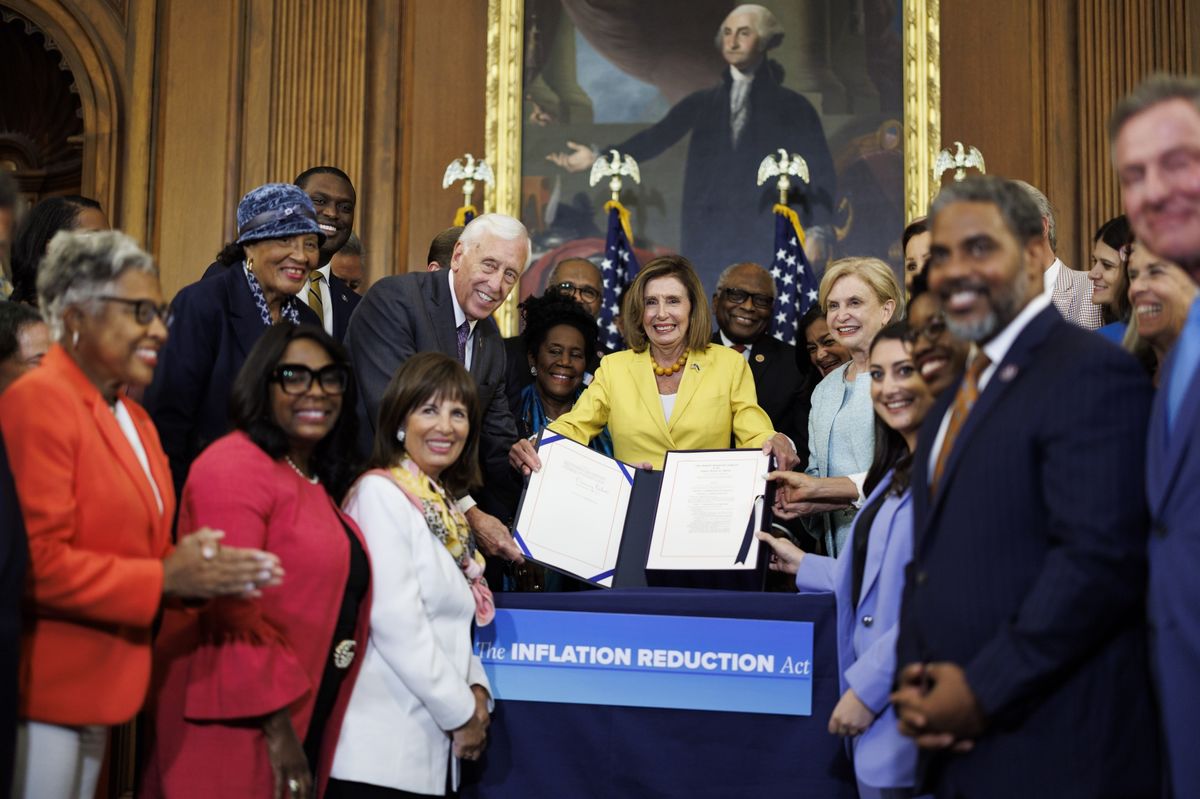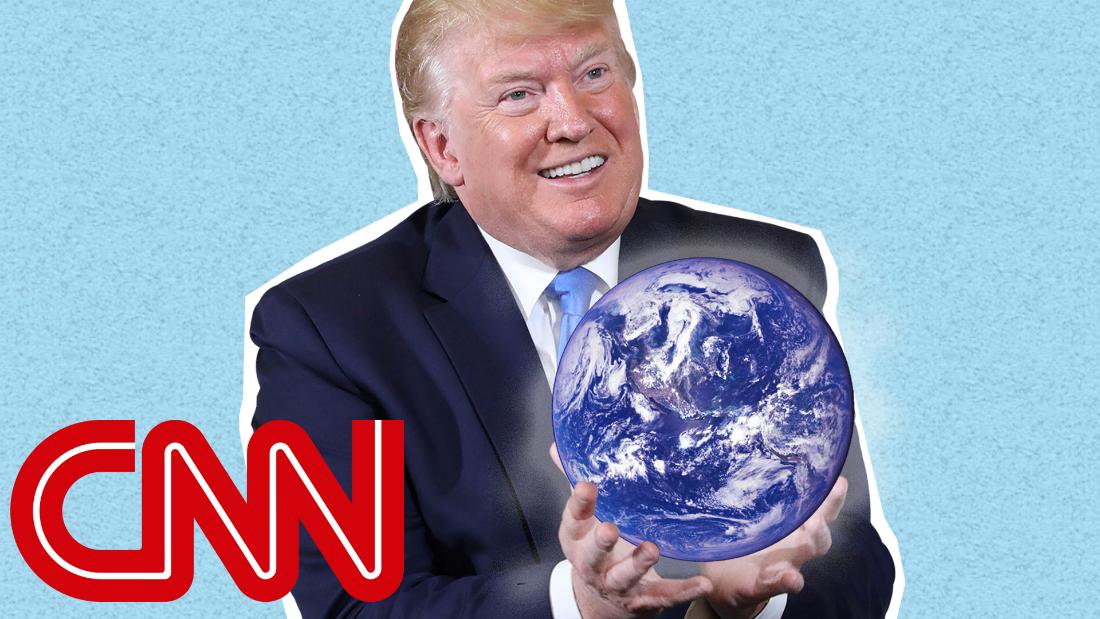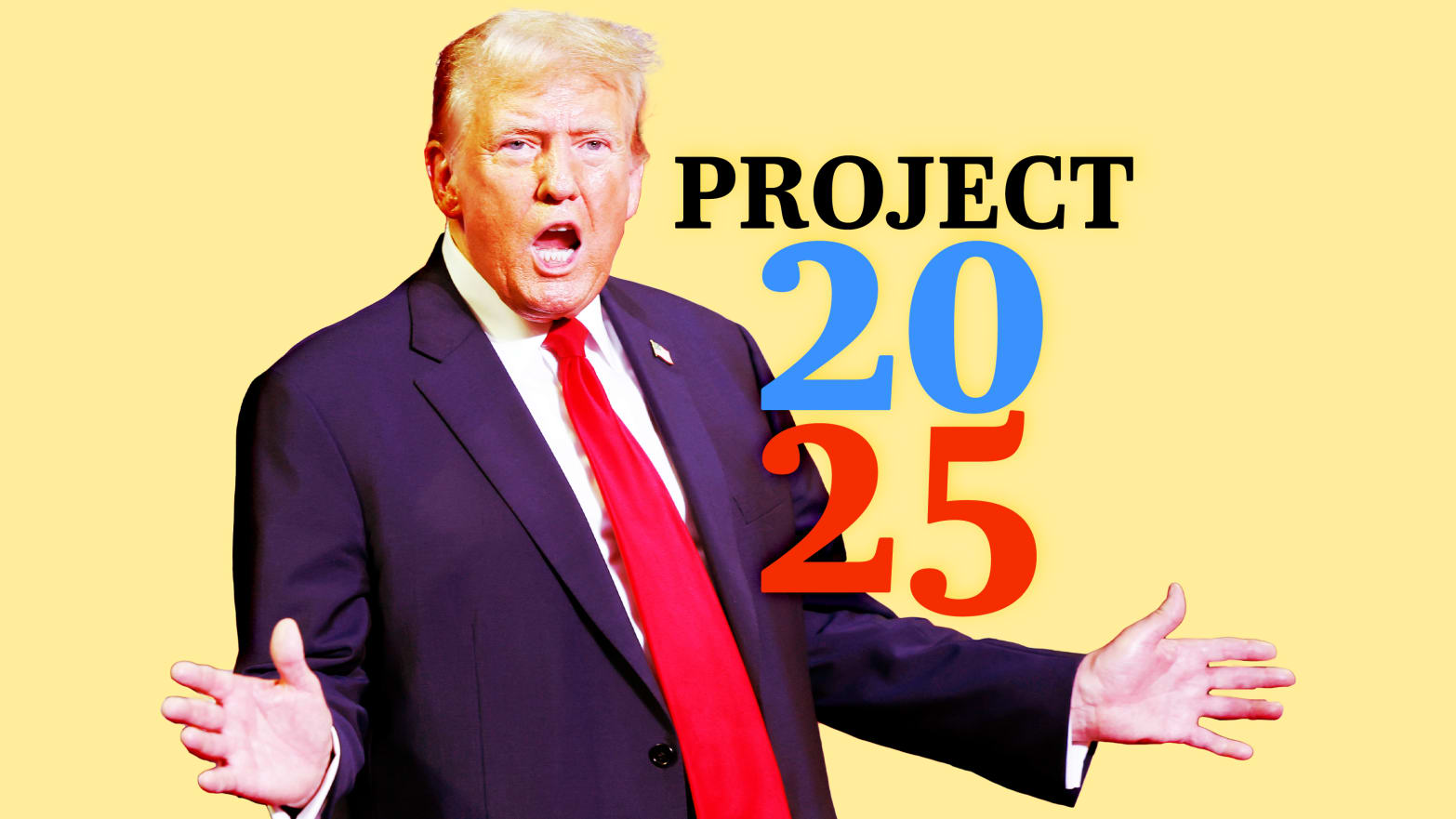
Six Climate and Environment
Takeaways From the Election
Jason Mark / Sierra Magazine
(November 7, 2024) — There’s no use in sugarcoating it: The 2024 election returns are a gut punch for those of us who care about climate change, preserving clean air and clean water, protecting lands and wildlife, and, in general, maintaining a livable planet full of wonder and abundance.
Donald Trump’s return to power will undoubtedly lead to an attempted assault on the Biden–Harris administration’s landmark climate-action achievements, as well as efforts to roll back long-standing environmental protections — which is exactly what Trump’s corporate backers have bought and paid for. The two most important words in that last sentence are attemptedand efforts, because even now, in these first grim days after the election, the environmental movement is busy mobilizing to fight Trump & Co.’s retrograde agenda.
To the great frustration of many environmental advocates, climate change and the environment weren’t really on the ballot this year. Compared with other hot-button issues like the economy, women’s rights, and democracy, environmental concerns fell pretty low on most voters’ lists of concerns. But even if the environment wasn’t on the ballot, the environment will likely be a casualty of the election. Unless, that is, the environmental movement and our allies can frustrate the Trump regime — just as we did during the first Trump administration.
Here are six things to keep in mind during the weeks, months, and — sorry to say — years ahead.

Trump 1.0 was environmental maliciousness smothered in incompetence; Trump 2.0 threatens to be environmental maliciousness spiked with ruthless efficiency.
1. Trump 2.0 threatens to be more ruthlessly focused than before
During his first term, Trump took a cleaver to US environmental policy. He pulled the US out of the Paris Climate Agreement; he sought to muzzle government scientists; he opened up the Arctic National Wildlife Refuge to oil drilling; he rolled back Bears Ears National Monument in Utah. He infamously called climate change a “hoax” and couldn’t even pronounce Yosemite National Park correctly.
Trump the sequel could be more awful. Once again, Trump plans to withdraw the US from the Paris Agreement. He says he wants to axe federal support for electric vehicles, which he erroneously calls a “mandate.” He has pledged to “frack, frack, frack and drill, baby, drill” and to intensify US oil and gas extraction — already at a historic high. “We have more liquid gold than any country in the world,” Trump said at his victory speech, in a reference to US fossil fuel reserves.
“It’s no secret that the incoming administration has been very clear in its allegiance to fossil fuel interests and its agenda of undermining climate and clean energy politics,” Rachel Cleetus from the Union of Concerned Scientists told Sierra. “In their first go-around, [the Trump administration] tried to roll back pollutions standards and public health standards. So we have to believe they will do exactly what they said they would do during the campaign.”
If Trump Part Two threatens to be even worse than the original installment, that’s largely because he (or at least his handlers) have learned from their past mistakes. Trump 1.0 was environmental maliciousness smothered in incompetence; Trump 2.0 threatens to be environmental maliciousness spiked with ruthless efficiency. In Washington, DC, personnel is, famously, policy. So will Trump appoint a bunch of wing nuts who don’t know their way around an organizational flow chart? Or will he put into his administration experienced DC operators who are adept in the dark arts of dismantling government agencies?
That question is top of mind for Kieran Suckling, the founder of the Center for Biological Diversity. “The first Trump presidency really failed long term to undermine environmental protections, and a key reason why it failed was that Trump appointed so many incompetent people who could not get anything done, like [EPA administrator] Scott Pruitt,” Suckling said. “So what’s going to happen now? Will Trump keep on his love of the wing nut, and put in lunatics? That will determine how much a Project 2025 will be able to accomplish.”
Speaking of which …
2. Keep an eye on Project 2025
When people show you who they are, believe them, Maya Angelou famously said. To get a sense of who the Trump administration will be, look no further than Project 2025, the far-right-wing policy blueprint cooked up by the Heritage Foundation.
Once Project 2025 became politically toxic, Trump as a candidate sought to disavow it. But the fact remains that some 140 people who worked in the first Trump administration — including six former cabinet secretaries — helped to write the plan, and it’s widely agreed that the phone-book-size tome will guide the next Trump administration.
Among other dangerous and destructive ideas, Project 2025 calls for the following:
- More oil and gas drilling as a way to “restore America’s energy dominance” and ending the supposed “war on fossil fuels”
- Dissolving and restructuring the National Oceanic and Atmospheric Administration, which, among other functions, houses the National Weather Service — the government agency thatprovides the data behind the weather apps on your phone
- Eliminating a raft of clean energy programs within the Department of Energy
- Reversing the long-standing EPA designation of carbon dioxide pollution as a threat to human health, which is the cornerstone of the federal government’s ability to regulate greenhouse gases
- Ending states’ ability, under the Clean Air Act, to adopt California’s rigorous standards for tailpipe emissions
In an interview with Sierra this past summer, the eminent climate scientist Michael Mann warned that should the Project 2025 policy agenda actually be implemented, “it would be game over for climate progress in the US, turning the reins of our government over to the polluters.”
If you haven’t yet, study up on the climate and energy provisions of Project 2025. It’ll give you a sneak preview into the environmental battles that are likely to come.

3. Rolling back the Inflation Reduction Act will be harder than Trump thinks
One of the top objectives of Project 2025 is the dismantling of the Inflation Reduction Act, the 2022 legislation passed by Congress and signed by President Biden that is the most ambitious US climate law in history. Trump has made clear he agrees with this goal, calling the IRA the “green new scam.”
But “repealing the IRA is going to be much more difficult than some Republicans think it’s going to be,” Sierra Club legislative director Melinda Pierce said. There’s a simple reason for this: The law is working, and as it works it has begun to generate bipartisan support.
Millions of Americans have benefitted from more than $8 billion in IRA tax credits to help pay for energy upgrades like highly efficient heat pumps and to help cover the costs of electric vehicles. Companies have announced about $265 billion in clean energy projects and manufacturing facilities since the IRA was signed into law, and in the process have created about 330,000 new jobs.
Here’s where things get interesting: A majority of those new clean energy and manufacturing investments are sited in Republican states and Republican districts. According to a Washington Post analysis, “congressional districts that favored Trump in the 2020 election received three times as much clean energy and manufacturing investments as those that leaned toward Biden.” A separate number-crunching exercise found that two-thirds of new solar, wind, and battery projects have been built in counties that voted for Trump.
This explains why 18 Republican House members in August wrote to Speaker Mike Johnsonasking him not to target the clean energy tax credits in the IRA. Eighteen members might not sound like a lot — but it’s very likely to be within the margin of control in the House of Representatives come January.
Maybe the Republicans will try to take apart IRA piecemeal; the tax credits for electric vehicles seem especially vulnerable. But it’s just as likely that they’ll wage an ideological frontal assault on IRA as a whole, and in the end can’t come up with the numbers to repeal it. In Trump’s second term, the Inflation Reduction Act may become the new Affordable Care Act — a popular, successful Democratic initiative that, try as they might, they just can’t eliminate.

4. The Green Resistance is ready — and now has economics at its back
On the morning after the election, the mood among environmentalists was grim but defiant.
“This moment right now is why the environmental movement exists — we exist to stand strong in the worst-case scenarios,” Suckling from CBD said.
“We are going to defend our progress,” the Sierra Club’s Pierce insisted. “We are not unprepared. We have been to this rodeo before.”
“We will resist,” Cleetus from the Union of Concerned Scientists said. “We will fight in the interest of preserving as much as possible, so that we can come back and do more and do better later.”
“Our job is to fight back,” longtime climate activist Jamie Henn pledged on X.
Sounds like echoes from eight years ago, when in the wake of the first Trump victory, progressives coalesced into what came to be called, with a romantic flourish Muir would’ve loved, The Resistance.
But when it comes to climate change and the environment, there’s a huge difference between today and the original Trump election of 2016. Nearly a decade later, the United States is in the midst of a clean energy revolution, one that is already (as explained above) shuffling some of the political calculus. The United States today — unlike eight years ago — is now home to an increasingly mature clean energy sector that, as much as Trump and his oily allies would like to slow it down, looks to be implacable.
“The fossil backers of Trump’s campaign would love to turn back the clock, but we know that Americans support clean energy,” said Craig Segall, senior vice president at Evergreen Action. “We have billions of dollars in the clean energy economy that we didn’t have before. You can’t squeeze the toothpaste back in the tube.”
Segall pointed out that while the federal government is essential to addressing the climate crisis, it’s not the only player — especially in a system like ours in which cities, counties, and states wield considerable power to chart their own course. “Environmentalists say that we’re up against misrule in DC — but we’ve been up against misrule for decades. What the movement has always done is organize, and it’s the cities and states and communities that will decide whether to put in clean energy and a clean industrial sector.”
Even as the environmental movement remains vigilant at contesting Trump’s destructive agenda, over the next few years, you can expect to see environmentalists focus much of their attention on city and state governments. At the same time, the movement will likely intensify pressure on corporate actors, especially the banks and insurance companies that continue to underwrite the fossil economy.
In some ways, that’s a repeat of the environmental movement’s 2017-19 playbook. Only now it comes with the benefit of lessons learned from the last time around, as well as the jolt of IRA. “We will spend the next four years incubating at the state level the policies that we hope to achieve at the national level post-Trump,” said Jennifer Hensley, the senior director of state lobbying and advocacy at the Sierra Club. “And, at both the state and local level we will implement the climate solutions offered by the IRA to make a daily impact on our utility bills and to be more resilient in the face of the devastating weather events impacting our communities.”

5. The silver lining — states are leading the way
Environmentalists’ aspirations to move climate progress at the state and local level is part of a budding progressive strategy to leverage states as laboratories to expand individual freedoms and advance progressive ideals. In this election, there were some important victories at the state level that demonstrate how this strategy might play out.
Perhaps the biggest environmental win came in Washington State, where voters crushed (by a more than 20 point spread) an initiative concocted by a Seattle hedge fund bro that would’ve dismantled the state’s strongest-in-the-nation climate law, which has raised billions of dollars for clean energy projects there. While the Evergreen State is famously green in terms of its environmental politics, the absolute thrashing of the measure reveals that voters are willing to tolerate higher energy prices — as long as they come with real environmental benefits.
Meanwhile, voters in South Dakota rejected a measure that would’ve made it easier to permit a contentious CO2 pipeline. The prairie opposition to this one pipeline is a great example of the unlikely allies and uncomfortably large coalitions that are forming as environmentalists join with more politically conservative activists to push back on carbon capture and storage.
In California, voters overwhelming approved Proposition 4, a $10 billion bond measure that will help the state get ready for the impacts of climate change. It’s a good example of how some places recognize that it’s not enough to merely ratchet down emissions; at this point in time, it’s also essential to adapt to the climate chaos already upon us.
And while it wasn’t an overtly environmental contest, in the nonpartisan race for Montana’s state supreme court, voters appear poised to elect Katherine Bidegaray, who in her campaign trumpeted her support for the current Montana Constitution. Why is this an environmental issue? Because last year a Montana court ruled in favor of a group of young people who sued the state for its role in fueling climate destruction — a case now under appeal to the state supreme court. Montana’s constitution includes an explicit right to a clean and healthy environment — a perfect example of how the states can lead the way in expanding freedoms.

6. Ultimately, physics trumps politics
The 2024 election will make its way into the planet’s geologic record. Even if, in a best-case scenario, a second Trump administration only manages to slow down the US energy transition by a notch or two, the delay will be detectable in some future geologist’s soil sample, noticeable by the continued presence of elevated CO2 levels. At this point, every 10th of a degree of warming matters, and the Trump election is bound to heap some more heat onto the ledger.
Mother Nature may not give a damn about the political machinations of humans, but she does seem to have a darkly ironic sense of humor. The week before the election, nearly the entire country was suffering through drought conditions. This October was the driest in New York City since recordkeeping began in 1869. Speaking of New York City — the temperature there was 80°F the day after the November election, a freakish and fearsome harbinger.
“Maybe the most important thing to recognize is that facts and science don’t bend to politics,” Cleetus said. “Climate change is here and now, and people are experiencing climate impacts already in their daily lives. This is not some far-off thing in the atmosphere. It’s impacting people’s homes and livelihoods now, from hurricanes to extreme heat.”
Trump’s grandiose illusions (“I alone can fix it”) are no match for the planetary forces we’ve unleashed through the burning of fossil fuels. No amount of nostalgia for an America that never was can turn back the clock — can reverse the rising levels of global carbon pollution or prevent the storms and the floods. Climate change is coming for Donald Trump, whether he likes it or not.
Catastrophe is a lousy consolation for political defeat — but there you have it. In the absence of political leadership, the climate fires of the second coming of Trump will have to fuel our movement for preserving a livable planet.
Jason Mark is the editor of Sierra and the author of Satellites in the High Country: Searching for the Wild in the Age of Man. He is writing a book about shifting baseline syndrome and the antidotes to environmental amnesia to be published by W.W. Norton. Follow him on X @jasondovemark.
